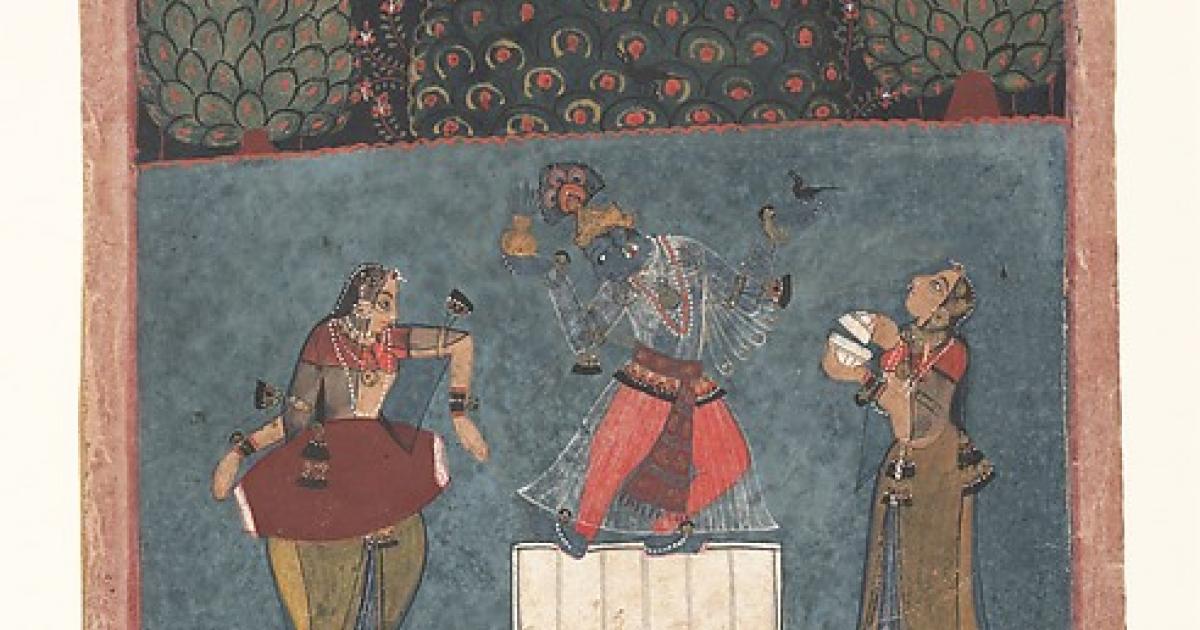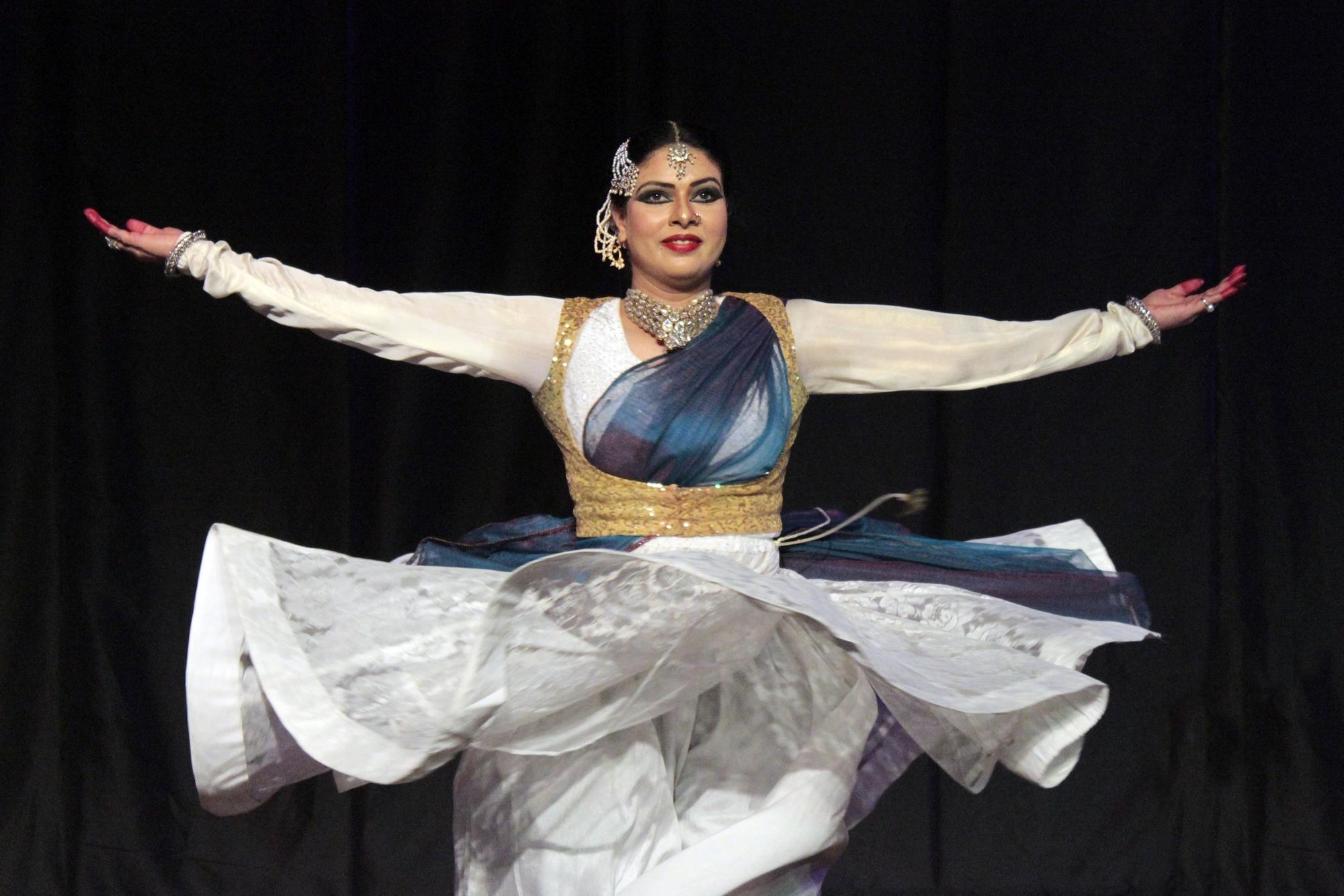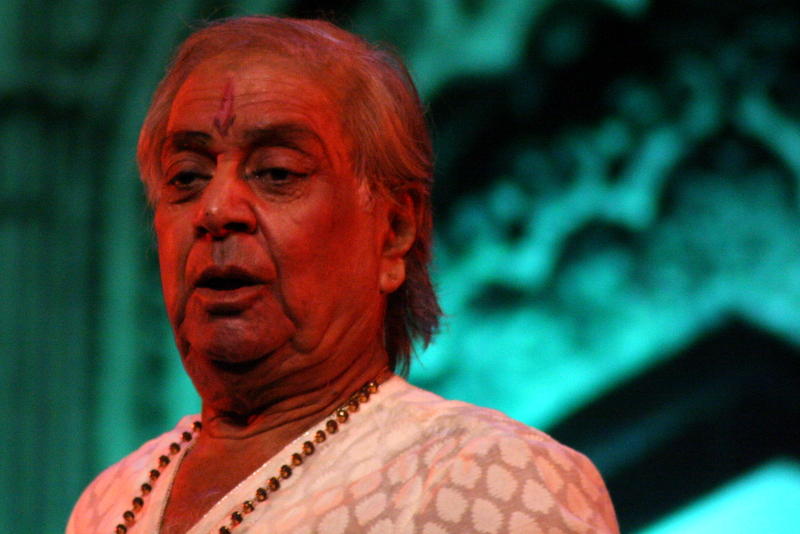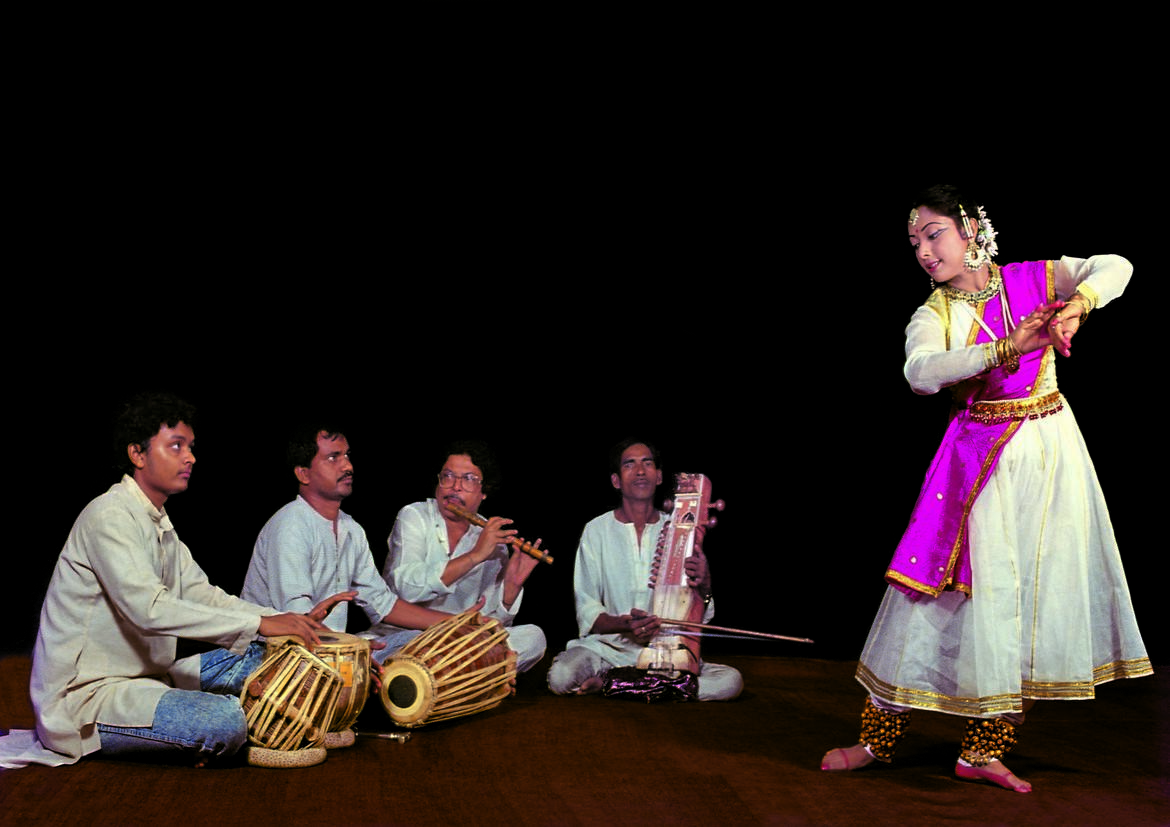Indian classical dances form a vital part of the nation's customs and culture. There are eight classical dances in India, all captivating creations of imaginative and beautiful performances. A prime example of an Indian art form is Kathak dance.
Like the other traditional dance styles, Kathak is much more than just a means of artistic expression. Its beginnings, development, and level of expertise in performances are the result of the fusion of philosophy, science, mythology, and creativity. Every action in Kathak has a purpose and is executed in unison with the body's natural rhythm and flow.

Origin and Evolution of Kathak Dance Form (कथक नृत्य का इतिहास)
The ancient dance style of Kathak is native to Uttar Pradesh. As an oral tradition, the technical and aesthetic elements of Kathak have been verbally handed down through generations. Similar to most Indian arts, Kathak is nourished by the teacher-disciple tradition of Guru-Shishya Parampara.
What is The Story Of Kathak?
The Vedic Sanskrit words "Katha" (meaning "story") and "Kathakar" (meaning "the one who tells a story") are the sources of the term "Kathak."
Roaming Kathakars or roaming bards used dance, singing, and music to tell stories that were influenced by ancient Indian epics and mythology. Elegant hand gestures, deft footwork, supple body motions, and—above all—intense facial expressions that convey a spectrum of emotions are how Kathak artists tell stories.
Blend into the living art tradition of the Chhau dance form.

Beginnings during the Bhakti Movement
During the Bhakti movement, Kathak changed and began to add stories about the Hindu god Krishna and his early years. Over time, Kathak developed as a way to demonstrate devotion to Lord Krishna. According to studies, Kathak originated in Varanasi and spread throughout North and North-west India, including Lucknow and Jaipur.
Learn about the history of Bharatnatyam.
According to the Lucknow branch of Kathak tradition, Lord Krishna materialized in the dream of his follower, Ishwari. In her dream, he told Ishwari to learn to dance as a kind of worship. Ishwari created Kathak as a dance style, and her descendants carried on the knowledge and evolution, resulting in the Lucknow Gharana of Kathak. During the Bhakti movement, the central theme of Kathak was the eternal love of Radha, Krishna, and the milkmaids (Gopis).
Kathak in the Mughal Era
The Mughal invasion had a profound effect on and renewed interest in the Kathak dance form. The Kathak dance style was extensively cultivated in the royal courts by the emperors, who were also its benefactors. Kathak was reinterpreted to emphasize the dance's elegant, expressive, and sensual qualities, and developed into a sophisticated form of entertainment. Affected by Mughal customs, Kathak performances included Mughal-era instruments and Urdu ghazals that are still in use today. It is the only style of classical Indian dance to incorporate Persian influences.

Kathak during the British Raj
It was during the British Raj that the Kathak dance form began to fade. This was primarily brought about by British opposition to Hinduism. Whereas Kathak was a manifestation of Hinduism, the British wanted to spread Christianity. Critics characterized the movements and attitudes as sensual, casting doubt on the dance form's historical roots.
Train in dance with dance classes in Mumbai on Superprof.
Kathak Dance Style
Kathak dancing essentially comprises three parts – Nritta, Natya, and Nritya. The technical portion of the performance, known as nritta, is when the dancer executes only pure Bharatanatyam movements, paying close attention to form, speed, range, and rhythm without adding any interpretive components.
Learn about the evolution of the Kathakali dance style.
Nritya is the part of the dance where the performer expresses emotions, spiritual ideas, and expressive gestures. The body language and gestures used to express the Nritya are usually slower and more in tune with the musical notes of the composition. Natya is performed by the dancers, who use interpretive dance to convey specific characters by keeping certain body gestures.
Kathak Gharanas
The names of the cities in which they flourished served as inspiration for the three distinct Kathak traditions or gharanas: the Banaras, Lucknow, and Jaipur Gharanas. The Banaras and Lucknow Gharanas place more emphasis on elegant hand gestures and facial expressions than the Jaipur Gharana does on foot movements.
The Kathak dancing style is characterized by rhythmic foot movements that are accompanied by music and embellished with little bells, known as ghungroo. The story is conveyed using a sophisticated vocabulary based on the gestures of the arms and upper body, facial expressions, neck movements, eyes, and eyebrow movement, flexible bends, and quick turns. The legs and torso are often straight.
The dance becomes mostly about the eyes and the footwork. The dancer uses her eyes as a means of telling the message she is trying to convey. The dancer makes a variety of facial emotions with her eyebrows. The Jaipur style is renowned for its amazing footwork, while the Lucknow style places more focus on acting. This is the main distinction between the sub-traditions.
Discover the story of the Odissi dance.
Costume of Kathak Dance

The garments worn by Kathak artists vary and are influenced by either Muslim or Hindu culture. There are two types of Hindu costumes for female dancers. One is styled differently from the traditional way that it crosses the left shoulder, but it is based on a sari. The sari usually hangs down from the left side of the Kathak artist's waist. Above, the body is covered with a blouse called a choli. The artist might don a scarf, known locally as an Orhni. Artists may accessorize their hair, face, ears, neck, hands, wrists, and ankles with jewelry, usually made of gold. It is typical to have a bindi or tika in the center of the forehead.
Explore the myriad hues of Manipuri dance style.
Hindu Kathak dancers in their second variant typically wear long, voluminous skirts that fall just above the ankles. The skirts are typically lightweight and have an embroidered border that draws attention to the dance motions.
The dancer's head and the skirt are usually covered by a translucent scarf, which contrasts with the choli of a contrasting colour. Typically, the second version includes jewellery. In addition to a skirt, the Muslim female dancer's outfit also often consists of form-fitting churidar pyjamas and, on occasion, a lengthy coat that covers the hands and upper body. There is a scarf covering the head, and the jewelry is not heavy.
For male Kathak artists, the traditional Hindu attire consists of a silk dhoti wrapped around the waist and topped with a silk scarf. Usually uncovered or adorned merely with the Hindu thread, the upper torso is occasionally shrouded in a baggy sleeveless jacket. While male Kathak artists wear jewelry as well, it is typically much simpler than that of female artists and made of stones. The kurta-churidar is the Mughal attire worn by male Kathak artists. The kurta might have an angarkha cut or be plain. Another option is to modify the kurta or angarkha for dancing so that the lower part has a wider flare. The vintage variety of costumes also features the tiny peaked hat.
Immerse yourself in the wonderful history of Kuchipudi.
Kathak Dance Accompaniments
The tabla, which syncs with the performer's rhythmic footwork, the harmonium or sarangi with manjira, which measures the tala or cycle, and numerous other instruments that can amplify, add effects, and depth to a Kathak performance are the most frequently used instruments to accompany a performance. One of the traditional Indian music genres, Dhrupad, is frequently employed to heighten a Kathak theatrical production.
Famous Kathak Dancers (कथक नृत्य के कलाकार)
Unravel the origins of Mohiniyattam, a classic among classics.
Birju Maharaj
Pandit Birju Maharaj, the torchbearer of Kathak dance, is the first person who comes to mind when discussing Kathak. He was the sole child and pupil of Shri Achhan Maharaj, a well-known figure in Indian Kathak around the globe.
Birju Maharaj was also a superb vocalist, specializing in Thumri, Dadra, Bhajan, and Ghazals. When he was seven years old, he made his stage debut. He started teaching dance at the age of thirteen, and by the time he was twenty-eight, his proficiency in the discipline had won him several important honors, such as the Sangeet Natak Akademi Award.
Find dance classes in Delhi to become a master of dance, on Superprof, you can learn dance from 1000s of teachers from across the city at home or through online classes.
Sitara Devi
The well-known Indian classical Kathak dancer, Sitara Devi was born in Kolkata. She made her dancing debut in front of an audience at Mumbai's Jehangir Hall. A high school dropout, Sitara Devi overcame all obstacles to succeed in her chosen industry. When she was sixteen years old, she gave a performance in Mumbai for India's first Nobel laureate, Rabindranath Tagore, which so impressed the scholar that he named her "Nritya Samragini" (Empress of Dance).

Sitara Devi danced with a strong enthusiasm. Additionally, she incorporated a wealth of themes, poetry, and dance that her father had collected to create her own distinctive style. She received a plethora of honors and recognitions. Sitara Devi performed throughout India and overseas over the years, including esteemed locations like Carnegie Hall in New York (1976) and the Royal Albert Hall in London (1967).
Lose yourself in the unique history of the Sattriya dance form.
Pandit Shambhu Maharaj
A guru of the Lucknow Gharana, Pandit Shambhu Maharaj was trained by Bindadin and by his elder brother Achchan Maharaj. Being skilled in Thumri as well as dancing gave him a distinct place among the best dancers. Because of his ability to prove his value in Nritya and Nritta with such brightness, he was able to hold a special place among the best dancers. Many of his students have gone on to become well-known Kathak dancers in the contemporary era. He oversaw the dance department of Bharatiya Kala Kendra as its director from 1955 until 1975. Panditji was bestowed with numerous accolades and titles, such as the Sangeet Natak Akademi Award, Padma Shri, Nirtya Samrat, and many more.
Kumudini Lakhia
Kumudini Lakhia was a trailblazer in the Indian dance scene. Her creations laid the foundation for modern Kathak as we know it today. Kumudini began studying Kathak at the age of seven or eight. Before going to Shambhu Maharaj, she was taught by several gurus in the Jaipur Gharana. The Kadamb School of Dance and Music was founded in 1967 by Kumudini. In the 1960s, she transitioned from being a solo dancer to a Kathak dancer. In addition to all of this, Kumudini travelled to the West and introduced Indian dancing to people there. Numerous honors, such as the Padma Shri, Padma Bhushan, and Sangeeta Natak Akademi Award, have been bestowed upon her.
Find a dance class near me easily on Superprof.















